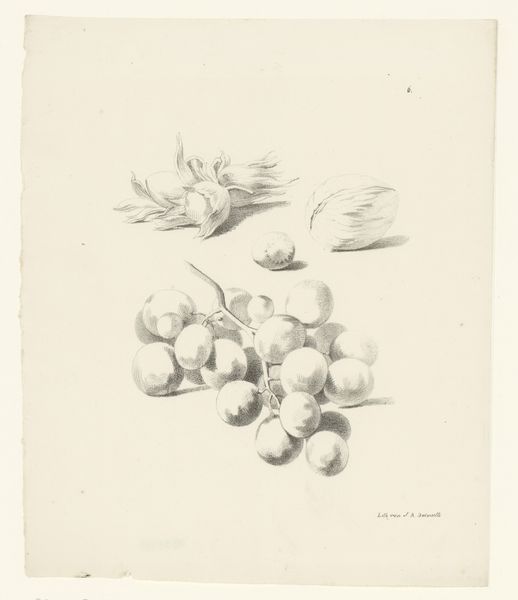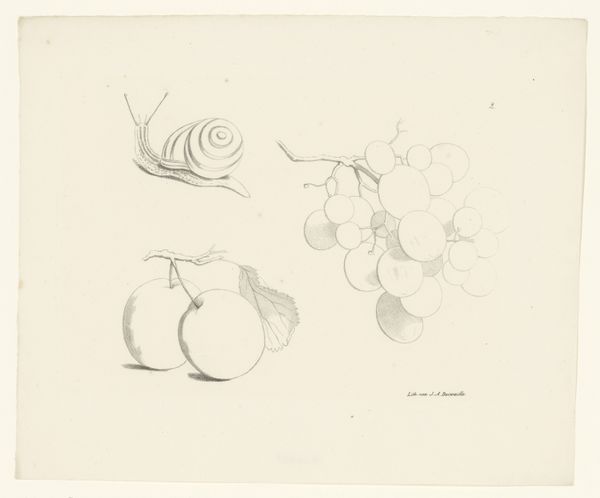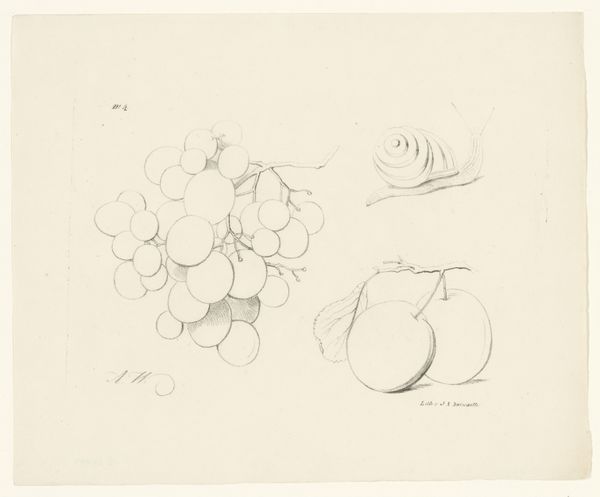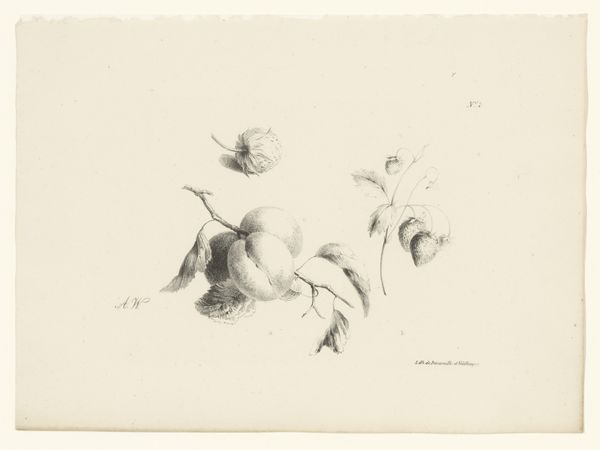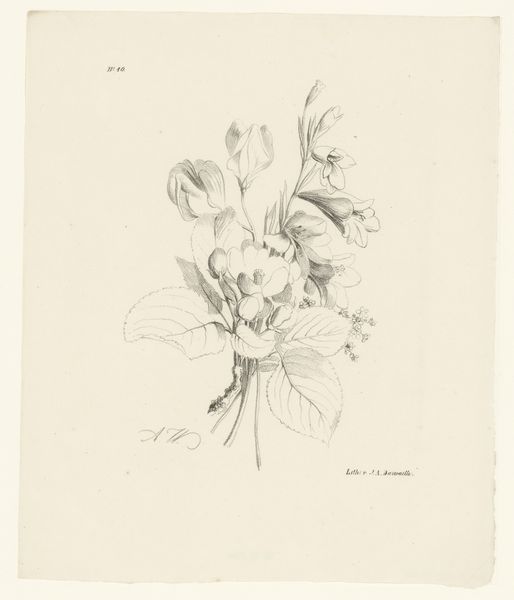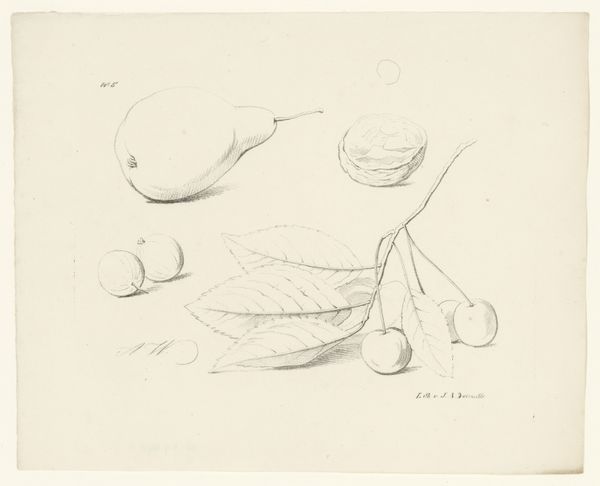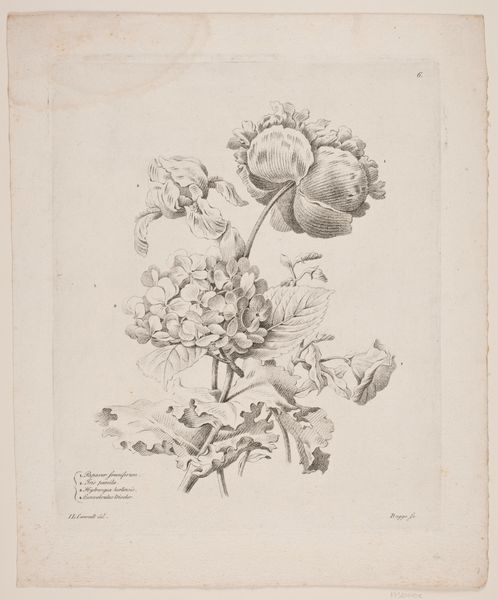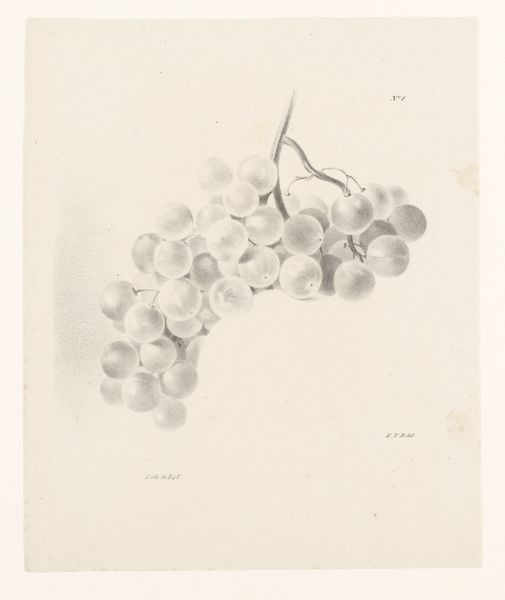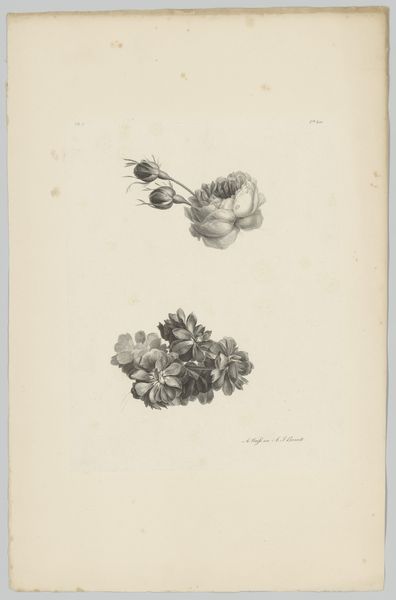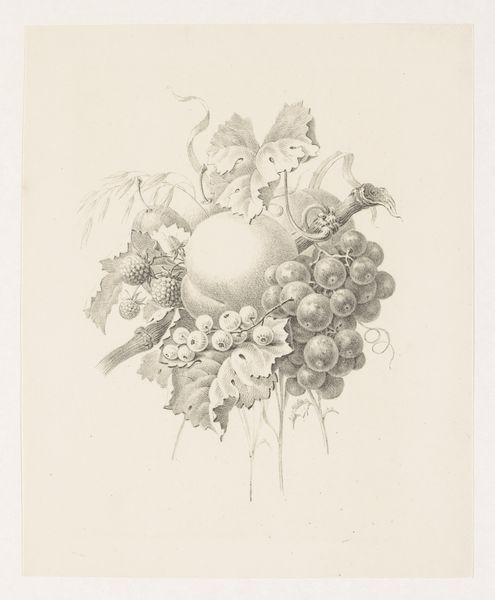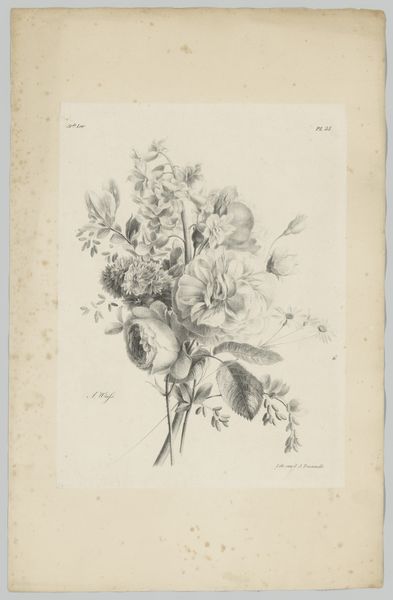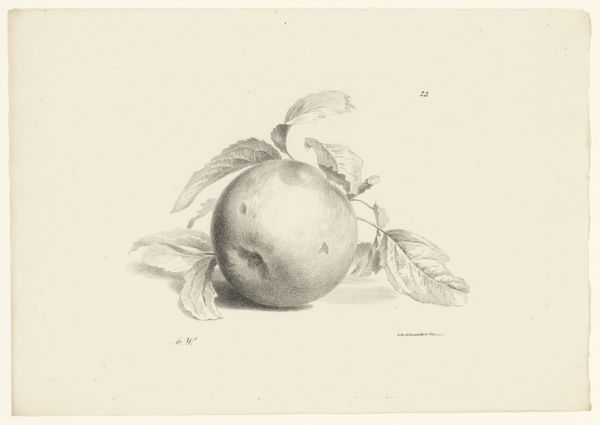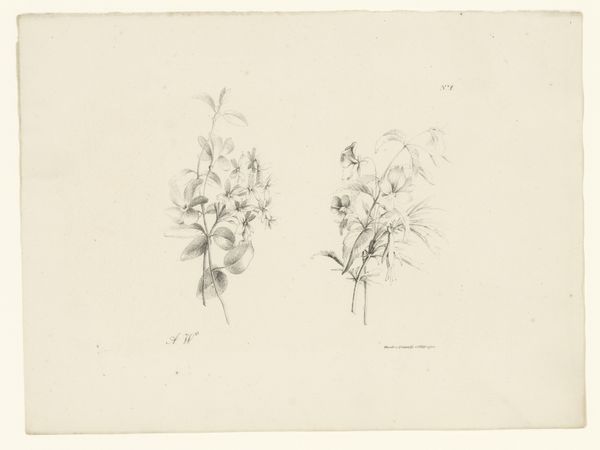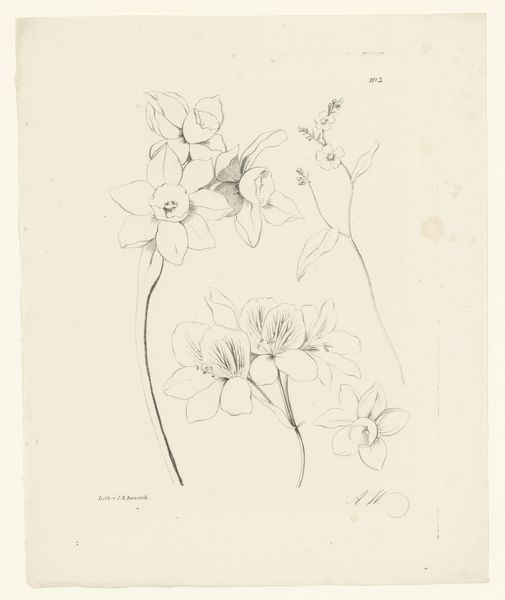
drawing, pencil
#
drawing
#
fruit
#
pencil
#
botanical drawing
#
realism
Dimensions: height 253 mm, width 210 mm
Copyright: Rijks Museum: Open Domain
Editor: Here we have "Walnuts, Hazelnuts, Grapes, and Blackberries," a pencil drawing from between 1820 and 1833, housed at the Rijksmuseum. There's a delicacy to the rendering, a quiet stillness. What story might these particular fruits and nuts be telling us? Curator: That’s a perceptive observation. Given its probable timeframe, situated post-French Revolution, we can see it through a lens of emerging bourgeois values. Botanical studies like this often served as tools for understanding and categorizing the natural world, a world increasingly viewed through a scientific, rational gaze. Consider, though, the socio-political implications. Who had the leisure and education to engage in such detailed study? Editor: Right, not exactly the peasantry. So it's about class and access to knowledge. I also noticed the seemingly deliberate arrangement. Does that signify something? Curator: Precisely! These aren’t just randomly sketched. The composition is carefully chosen. The abundance of fruit, each item meticulously rendered, hints at ideas about prosperity and control over nature's bounty, ideals closely associated with the rising merchant class. This wasn't just documentation; it was a statement about values and social standing, subtly coded in the language of realism. Also, consider the lack of human presence. Who benefits from all this plenty? Editor: Interesting. So what looks like a simple still life becomes an expression of societal power structures and aspiration? Curator: Exactly! These botanical drawings, ostensibly about observation, are equally about assertion. We are invited to contemplate not just the beauty of nature, but also its symbolic value in a specific historical context. Think about how that changes our appreciation of even simple images. Editor: I see now! It makes me consider the subtle ways art can uphold and also challenge those very systems. Thanks for sharing this perspective.
Comments
No comments
Be the first to comment and join the conversation on the ultimate creative platform.
